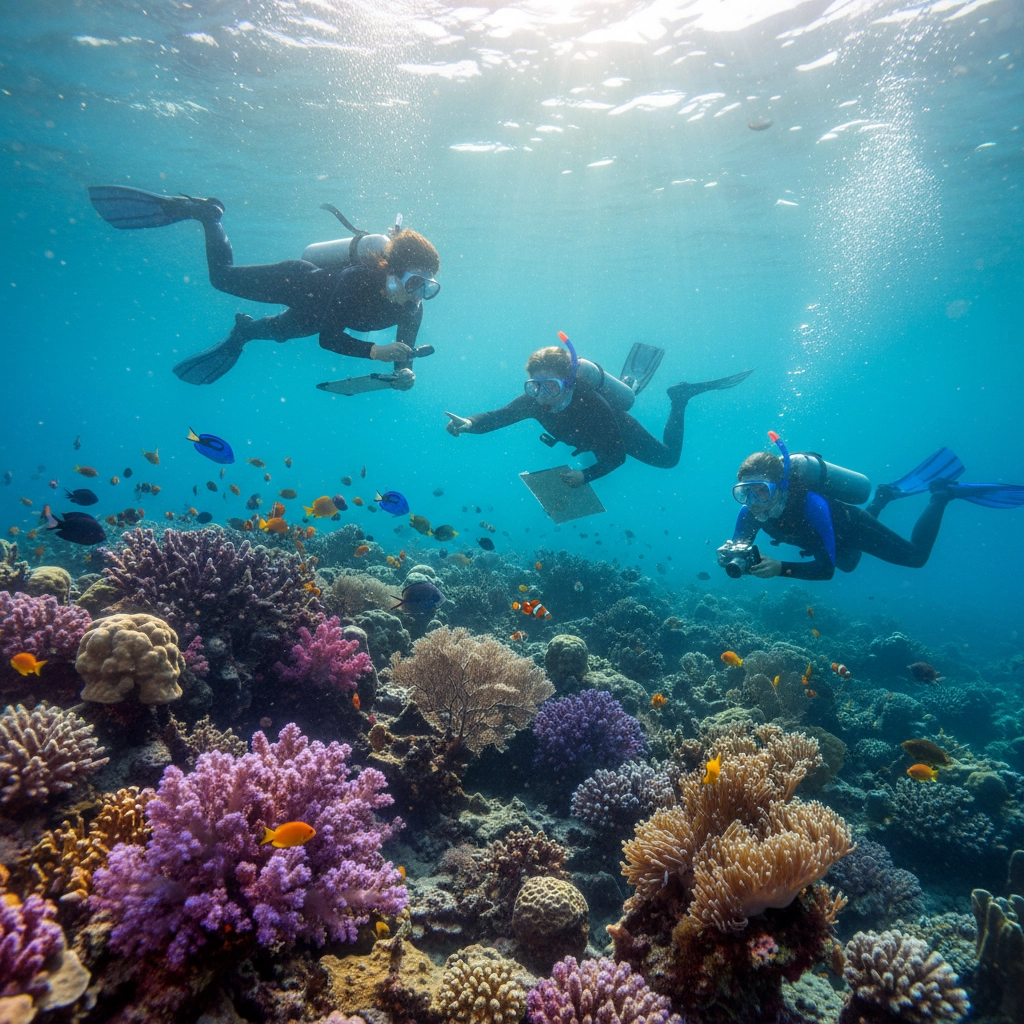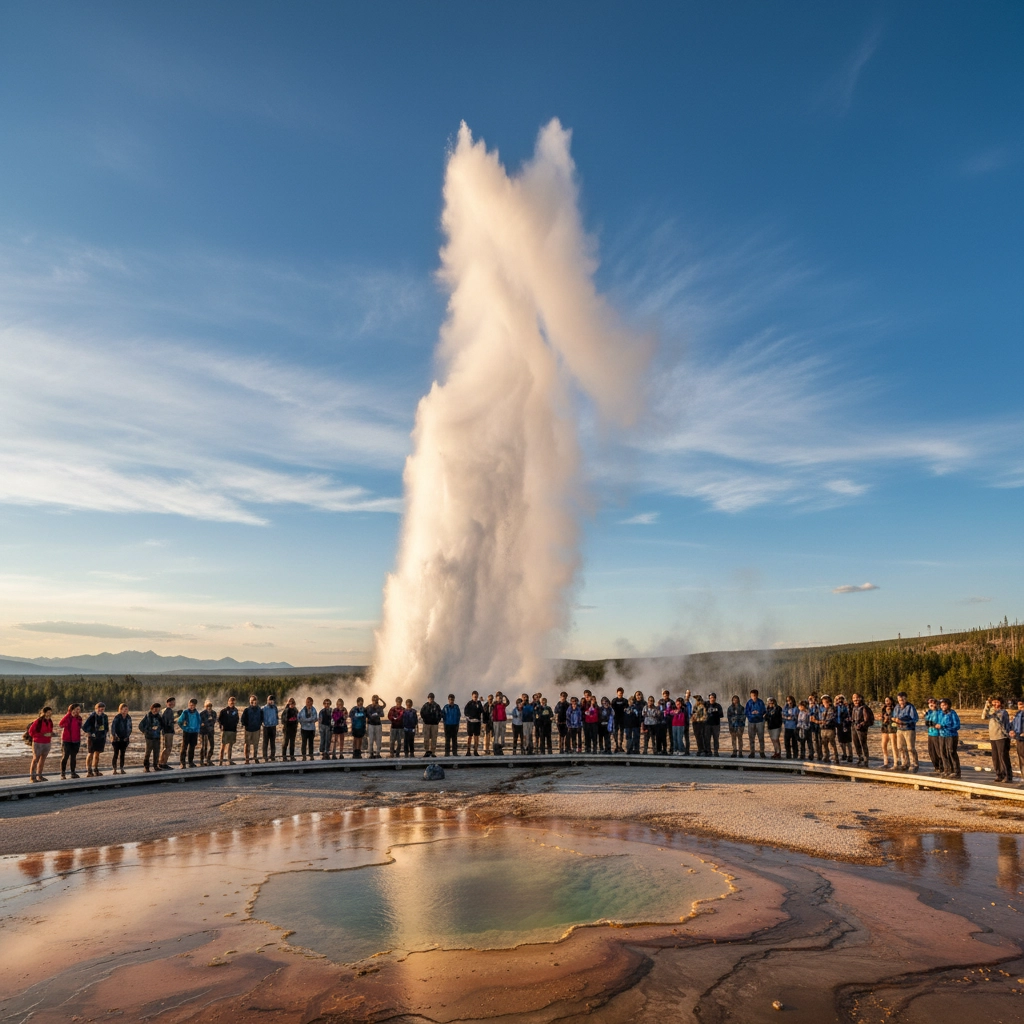Florida Keys vs. Yellowstone: Which Science Trip Will Transform Your Students More?
- Caleb Mullenix
- 24 hours ago
- 5 min read
Selecting the optimal science expedition for your students represents one of the most impactful decisions you will make for their academic development. The choice between Florida Keys marine science immersion and Yellowstone's geological wonders demands careful consideration of your curriculum objectives, student needs, and desired learning outcomes. Both destinations offer transformative educational experiences, yet each serves distinctly different scientific disciplines and learning goals.
Understanding the unique strengths of each location enables you to align your selection with specific educational priorities. Prepare to evaluate these two premier science destinations through the lens of hands-on learning opportunities, ecosystem diversity, service learning components, and practical implementation considerations.
Florida Keys: Marine Science Excellence in Action
The Florida Keys deliver an unparalleled marine biology and conservation science experience centered around the world's third-largest barrier coral reef system. This destination transforms students into active participants in marine research and conservation efforts while providing direct access to multiple marine ecosystems within a single location.
Hands-On Learning Opportunities
Engage your students in authentic scientific research through partnerships with world-class facilities including Mote Marine Lab and Pigeon Key Marine Science Center. Students participate directly in coral restoration techniques, marine animal behavior studies, and water quality monitoring programs. These experiences extend far beyond observation, requiring students to collect data, analyze findings, and contribute to ongoing conservation research.
Snorkeling expeditions at Sombrero Reef provide students with direct interaction with living coral ecosystems, where they observe marine biodiversity firsthand while learning about symbiotic relationships, food webs, and ecological interdependence. Kayaking through mangrove forests allows for ecosystem comparison studies, while laboratory sessions enable microscopic analysis of marine organisms and water samples.
Wildlife and Ecosystem Diversity
The Florida Keys encompass three distinct marine ecosystems accessible within a single program: coral reefs, seagrass beds, and mangrove forests. This diversity enables comprehensive study of marine habitat connectivity and species migration patterns. Students observe and document sea turtles, manatees, dolphins, tropical fish species, and coral polyps in their natural environments.
Educational programming addresses critical topics including ocean acidification impacts on shell-forming organisms, coral bleaching phenomena, and the role of apex predators in maintaining ecosystem balance. Students witness conservation efforts in action through sea turtle rehabilitation programs and coral nursery operations.

Service Learning Components
Implement meaningful service learning through direct participation in coral restoration projects, beach cleanups, and marine debris monitoring. Students contribute to citizen science initiatives by collecting data for ongoing research projects while developing environmental stewardship values. These activities create lasting connections between academic learning and real-world conservation action.
Programs typically include partnerships with local conservation organizations, enabling students to work alongside marine biologists and conservationists. This mentorship component enhances career exploration opportunities while demonstrating the practical applications of marine science education.
Yellowstone: Geological Processes and Ecosystem Dynamics
Yellowstone National Park offers an extraordinary earth science and wildlife ecology experience that illuminates geological processes and large-scale ecosystem management. This destination provides students with access to unique geothermal phenomena and intact wildlife populations rarely observed elsewhere.
Hands-On Learning Opportunities
Engage students in geological field studies through direct observation of geothermal features, including geysers, hot springs, and hydrothermal vents. Students collect temperature data, analyze mineral deposits, and study the relationship between geological activity and ecosystem development. These investigations provide tangible connections to earth science concepts including plate tectonics, geothermal energy, and geological time scales.
Wildlife observation programs led by National Park Service rangers enable students to study animal behavior, population dynamics, and habitat requirements in functioning ecosystems. Students document wildlife sightings, analyze food web relationships, and investigate human-wildlife conflict resolution strategies.
Wildlife and Ecosystem Diversity
Yellowstone's intact ecosystem supports populations of elk, bison, bears, wolves, and numerous bird species, providing students with opportunities to study predator-prey relationships and ecosystem restoration success stories. The park's diverse habitats, from alpine meadows to thermal springs, enable comparative ecosystem studies and climate adaptation research.
Students investigate how geothermal features create unique microclimates supporting specialized plant and microbial communities. These studies illuminate adaptation strategies and the role of environmental factors in species distribution patterns.
Service Learning Components
Participate in citizen science programs including wildlife monitoring, invasive species removal, and trail restoration projects. Students contribute to park conservation efforts while developing outdoor recreation skills and environmental stewardship values. These activities demonstrate the practical applications of ecological research and conservation biology principles.

Comparative Analysis: Aligning Destinations with Educational Goals
Curriculum Focus Alignment
Choose Florida Keys when: Your curriculum emphasizes marine biology, environmental science, conservation biology, or climate change studies. This destination excels for programs requiring hands-on laboratory experience, species identification skills, and conservation action components. The year-round accessibility and customizable program options accommodate diverse scheduling needs.
Choose Yellowstone when: Your curriculum focuses on earth science, geology, ecology, or wildlife biology. This destination provides optimal learning opportunities for programs emphasizing geological processes, ecosystem dynamics, and wildlife management concepts. The seasonal accessibility aligns well with summer programs and end-of-year expeditions.
Practical Implementation Considerations
Florida Keys advantages include: Year-round programming availability, all-inclusive package options, teacher accommodation benefits, and proximity to research facilities. Day trip options ($40-125 per student) provide budget-friendly alternatives, while multi-day programs ($540+ per person) offer comprehensive immersion experiences.
Yellowstone advantages include: Established educational infrastructure through National Park Service programs, diverse activity options, and integration with western U.S. travel circuits. Summer season programming aligns with traditional school break schedules and optimal weather conditions.
Student Group Suitability
Florida Keys optimal for: Students requiring marine science curriculum alignment, conservation career exploration, and laboratory skill development. Programs accommodate elementary through college levels with appropriate content modification. Groups benefit from small class sizes and personalized attention from marine science educators.
Yellowstone optimal for: Students studying earth science topics, requiring wildlife observation experiences, and developing outdoor recreation skills. The destination serves diverse age groups through ranger-led programming and self-guided exploration opportunities.
Strategic Recommendations for Program Selection
Decision Framework Implementation
Begin your selection process by evaluating curriculum alignment priorities. Identify whether your primary learning objectives emphasize biological sciences or earth sciences, as this distinction guides optimal destination selection. Consider your students' prior outdoor experience levels and physical activity capabilities when evaluating program requirements.
Assess logistical factors including travel distance, seasonal scheduling constraints, and budget parameters. Florida Keys programs offer greater scheduling flexibility and potential cost savings through day trip options, while Yellowstone requires summer season planning and typically involves higher transportation costs for most school locations.
Maximizing Educational Impact
Ensure pre-trip preparation includes relevant background content delivery, safety training, and expectation setting for both destinations. Develop assessment strategies that capture learning outcomes specific to each location's educational strengths. Create post-trip reflection activities that reinforce key concepts and encourage continued scientific interest.
Consider implementing follow-up projects that enable students to share their experiences with younger students, creating mentorship opportunities and reinforcing their own learning. These activities extend the educational impact beyond the trip duration while building program sustainability.
Conclusion: Transformative Learning Through Strategic Selection
The most transformative science trips result from deliberate alignment between destination strengths and educational objectives. Florida Keys excel in providing marine science immersion with active conservation participation, while Yellowstone delivers geological and ecological learning through wilderness experiences. Both destinations offer authentic scientific experiences that inspire lifelong learning and environmental stewardship.
Your selection should reflect careful consideration of curriculum priorities, student needs, and practical implementation factors. Regardless of your choice, ensure comprehensive preparation, clear learning objectives, and follow-up activities that maximize the transformative potential of these remarkable educational opportunities. The investment in experiential science education creates lasting impacts that extend far beyond traditional classroom boundaries.



Comments